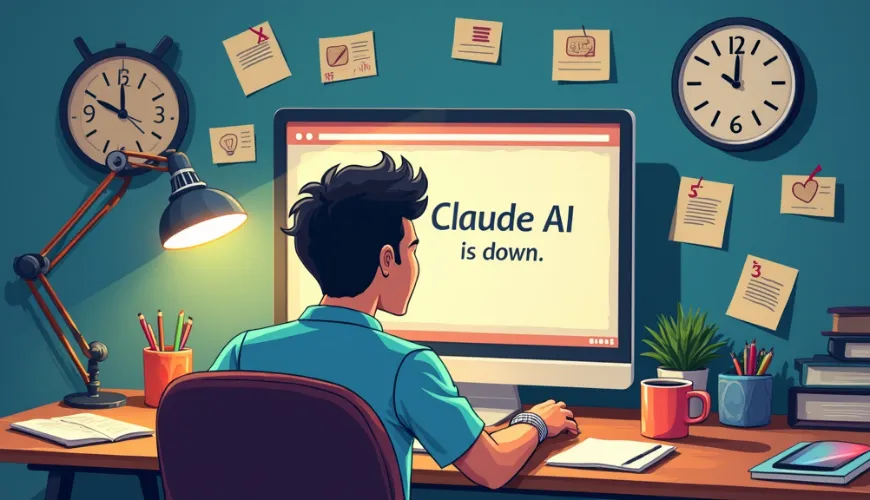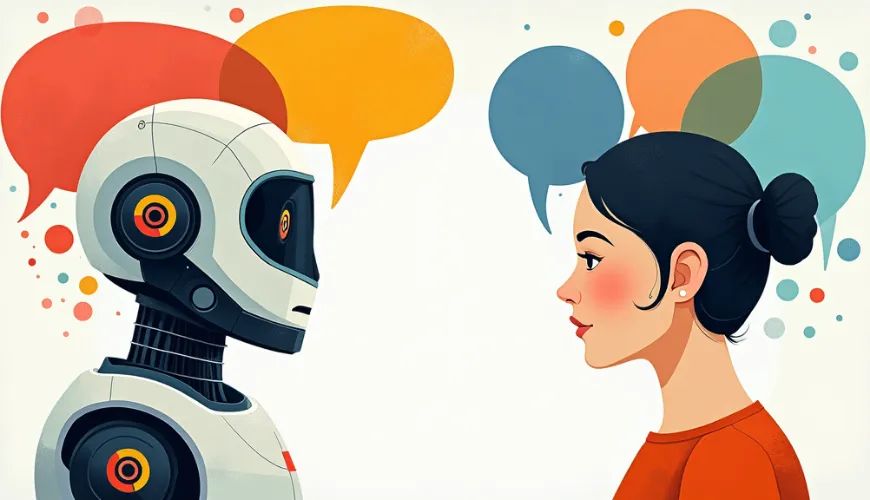TL;DR – 3-Line Summary
• Claude 3 excels at clear reasoning, context retention, and understanding nuanced prompts.
• GPT-4 is incredibly versatile, creatively expressive, and shines in coding, writing, and ideation tasks.
• Choose Claude for critical thinking and longer conversations; go with ChatGPT for creative tasks, broad capabilities, and plugin access.
If you've been exploring AI tools to sharpen your productivity game, you've likely come across two juggernauts in the space: Claude 3 by Anthropic and GPT-4 by OpenAI. Both are powerful, advanced language models available through platforms like Claila, offering users a suite of productivity-focused tools. But when it comes to the debate of Claude vs ChatGPT, the differences can be subtle, yet meaningful—especially depending on how you plan to use them.
Let's break down their core strengths, how they handle different tasks, and which one might be the better fit for you.
Understanding the Foundations: Who Built What?
Claude is developed by Anthropic, a San Francisco-based AI company founded by former OpenAI employees. The Claude 3 model family—which includes Claude 3 Haiku, Claude 3 Sonnet, and Claude 3 Opus—is designed with an emphasis on safety, transparency, and alignment with human intent. The name "Claude” is a nod to Claude Shannon, the father of information theory.
GPT-4, on the other hand, is created by OpenAI, the company behind the widely popular ChatGPT. GPT-4 powers ChatGPT Plus and is known for being one of the most advanced and versatile LLMs currently available. It supports plugins, tools like Code Interpreter, and even image inputs with ChatGPT Vision.
Core Strengths: Claude 3's Quiet Intelligence
Claude 3 tends to outperform when it comes to complex reasoning, consistency, and staying aligned with user intent over long conversations. It's especially impressive at following multi-step instructions and maintaining coherent narratives or logic without going off-track.
One standout quality of Claude is its ability to retain context across extended dialogues. This makes it ideal for users working on long-form writing, legal analysis, or any task where consistency over time is crucial. For instance, if you're writing a research paper or conducting an in-depth analysis, Claude tends to "remember” your earlier points more reliably.
In addition, Claude often feels more like a thoughtful assistant. It responds with clarity, avoids hallucination better in many contexts, and is less likely to generate content that sounds overconfident or misleading. If you've ever wondered Is Claude Down?, it's likely because so many users are relying on its consistent performance.
GPT-4's Versatility: A Creative Powerhouse
GPT-4 is a Swiss Army knife in the world of AI. It can code, write poems, solve math problems, draft emails, and even generate images (via DALL·E integration). What makes ChatGPT so appealing is its fluid creativity and expansive general knowledge base.
GPT-4 tends to be more flexible in tone and can shift between casual, formal, or humorous writing styles with ease. That's a big reason why many users turn to it for scriptwriting, brainstorming, or even personalized journaling. If you're interested in improving your prompts for better responses, check out How to Make ChatGPT Sound More Human.
Another advantage of GPT-4 is tool integration. With tools like Python Code Interpreter, web browsing (available in ChatGPT Pro), and third-party plugins, GPT-4 becomes much more than a chatbot—it transforms into a robust digital assistant.
Real-Life Use Cases: Picking What Works for You
Let's say you're a student writing a thesis. Claude may be more helpful for managing sources, referencing prior context, and articulating in a scholarly tone. It tends to stay "on topic” better during deep dives and is less prone to hallucinating citations.
Now imagine you're a startup founder brainstorming app ideas. In this case, GPT-4 could be your go-to. It's more creative with concept generation, better at pitching ideas in different tones, and offers broader domain knowledge for market analysis.
Even professionals in law, finance, and research tend to appreciate Claude's attention to detail and its structured responses. Meanwhile, marketers, designers, and developers often lean toward GPT-4 for its creative edge and toolset.
Safety and Alignment: How Do They Handle Sensitive Tasks?
Claude 3 was built with a strong focus on constitutional AI. a method that puts safety and ethics at the core of training. This means Claude is often more cautious in its responses, especially when dealing with sensitive or controversial topics.
While GPT-4 also includes safety filters and alignment protocols, it's generally more permissive and adaptable. This flexibility can be a double-edged sword—it allows for vivid storytelling, but sometimes at the risk of hallucinating information or veering into unintended content.
If you're working on compliance-heavy, regulated, or high-accuracy content, Claude may be a better choice. But if you're okay with reviewing and editing AI outputs for creativity and speed, GPT-4 shines.
Performance and Speed: Who's Faster?
Speed depends on the version you're using. Claude 3 Haiku is extremely fast and lightweight, making it perfect for mobile or quick-turnaround tasks. Claude 3 Sonnet and Opus are more powerful but slightly slower.
In contrast, GPT-4 (especially GPT-4 Turbo in ChatGPT Plus) is generally fast and performs well, even during high loads. Plus, it offers a smoother interface within ChatGPT, making it easier for casual users to get started.
For real-time productivity, both models are highly competitive—but Claude might feel snappier in certain configurations, especially when integrated through platforms like Claila.
Training Data and Knowledge Cut-Offs
As of early 2024, Claude 3's training includes data up to August 2023. GPT-4 Turbo, however, includes information up to April 2023. While these dates are close, Claude may have a slight edge in terms of recency, making it a better pick for tasks that deal with newer information.
That said, GPT-4's access to web tools in ChatGPT can somewhat compensate for its slightly older training data. If you need fresh content or fact-checking, GPT-4's web browsing tool (when available) can be a game-changer.
Which One Sounds More Human?
Both Claude and GPT-4 can mimic human-like conversation quite well, but they do so in different ways. Claude feels more measured, like a thoughtful colleague who takes your words seriously. It's careful, rational, and considerate.
GPT-4 can emulate a more emotionally intelligent and expressive persona. It adapts to your tone, mirrors your style, and can even throw in humor or banter. That's why many people use it for storytelling or even as a conversational companion.
If your goal is to write in a more natural tone, GPT-4 often offers more flexibility in expression. But Claude might suit those who prefer a more professional or academic voice.
Cost and Accessibility
Currently, Claude is accessible via Anthropic's API as well as through platforms like Claila. Many users enjoy Claude's pricing tiers and the option to scale based on usage.
GPT-4 is available through ChatGPT Plus ($20/month), which gives access to GPT-4 Turbo. It also integrates into Microsoft products like Word and Excel, making it highly accessible for business users.
Depending on your environment—personal use, team collaboration, or enterprise integration—either model can be cost-effective. Consider how often you'll use it and whether tool integrations matter to you.
The Verdict: It's All About the Task
The decision between Claude and ChatGPT really depends on what you're trying to accomplish. If you prioritize reasoning, consistency, and accuracy, Claude will likely serve you better. If you need versatility, creativity, and tool support, GPT-4 is the superior option.
For example, a content strategist handling SEO briefs may appreciate GPT-4's ability to generate multiple content angles and tones. Meanwhile, a data analyst writing technical documentation might rely on Claude to produce structured, logical content that stays on track.
Both models are exceptional in their own right, and the good news is—you don't have to pick just one. Tools like Claila let you switch between Claude, GPT-4, and other models like Grok or Mistral, depending on your needs.
Just like choosing between a Mac and a PC, or coffee and tea, it all boils down to personal preference and use case. But now that you understand the strengths of each, you're in a much better position to make the most of what these advanced models have to offer.



